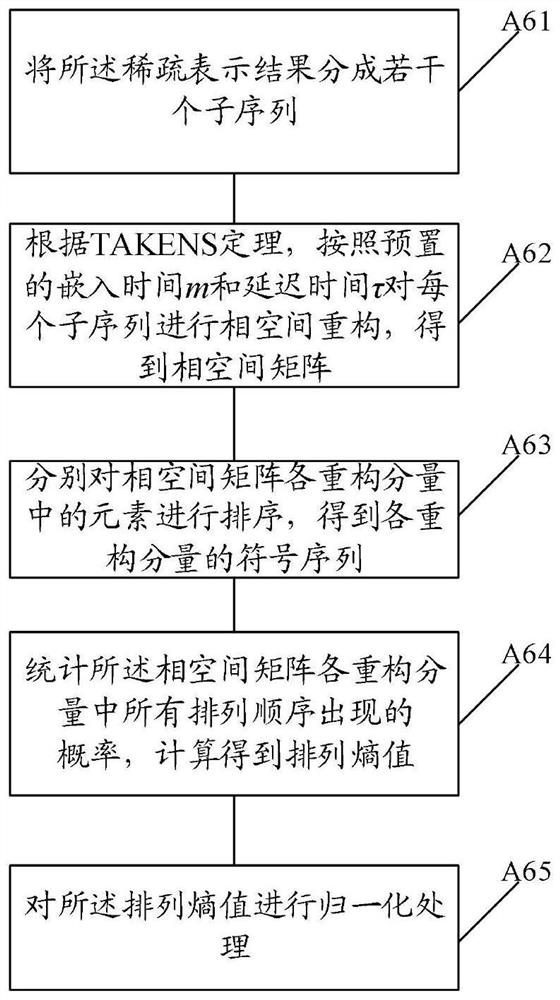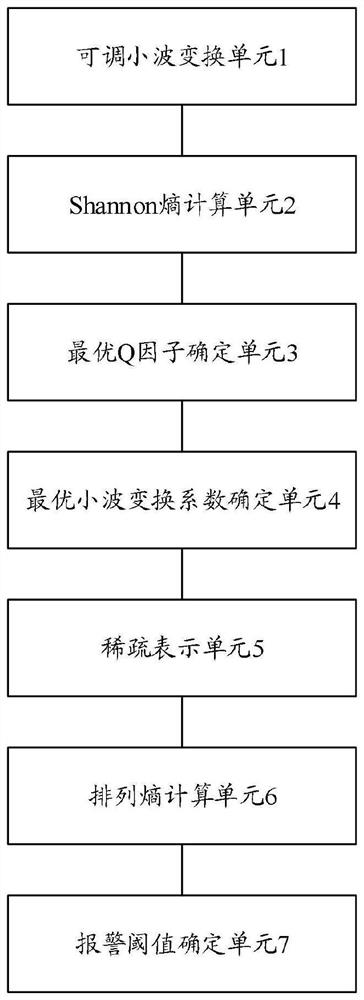Rolling bearing performance degradation feature extraction method and system
A rolling bearing and feature extraction technology, applied in special data processing applications, testing of machine/structural components, testing of mechanical components, etc., can solve problems such as fault detection time lag, feature component noise signal submergence, and signal complexity changes, etc. Achieve the effect of enhancing sensitivity, reducing interference, and improving safety of use
- Summary
- Abstract
- Description
- Claims
- Application Information
AI Technical Summary
Problems solved by technology
Method used
Image
Examples
Embodiment 1
[0049] Such as figure 1 As shown in the flow chart, this embodiment provides a rolling bearing performance degradation feature extraction method, including the following steps:
[0050]A1. Decompose the vibration signal of the rolling bearing based on the adjustable wavelet transform of different Q factors, and obtain the wavelet transform coefficients of each frequency band under different Q factors; the vibration signal of the rolling bearing is the vibration signal of the rolling bearing during the running time period.
[0051] A2, process the wavelet transform coefficients of each frequency band under each Q factor into the distribution probability of feature energy in each frequency band, calculate the Shannon entropy of each Q factor, and step A2 specifically includes:
[0052] The wavelet transform coefficients of each frequency band under each Q factor are expressed as the distribution probability of the characteristic energy in each frequency band under the correspond...
Embodiment 2
[0075] In addition, the method of embodiment 1 of the present invention can also be by means of image 3 The architecture of a rolling bearing performance degradation feature extraction system is shown to achieve. Such as image 3 As shown, the rolling bearing performance degradation feature extraction system may include an adjustable wavelet transform unit 1, a Shannon entropy calculation unit 2, an optimal Q factor determination unit 3, an optimal wavelet transform coefficient determination unit 4, a sparse representation unit 5, and a permutation entropy calculation unit Unit 6 and alarm threshold determination unit 7; some modules may also have subunits for realizing their functions. certainly, image 3 The architecture shown is just an example. When implementing different functions, according to actual needs, you can omit image 3 One or at least two components of the system shown.
[0076] The program part in the technology can be regarded as a "product" or "article"...
Embodiment 3
[0079] The method for extracting the performance degradation feature of the rolling bearing provided by the present invention will be described in detail below by way of specific examples.
[0080] When using permutation entropy to reflect the degradation trend of rolling bearing performance, only by minimizing or eliminating the interference caused by noise components can the high sensitivity of permutation entropy to rolling bearing state changes be guaranteed. Taking the rolling bearing fault simulation signal as an example, after superimposing white noise according to different signal-to-noise ratios, the corresponding permutation entropy values are shown in Table 1 below.
[0081] Table 1
[0082]
[0083] It can be seen that the arrangement entropy value of the rolling bearing signal has a significant difference with or without noise interference, and increases with the enhancement of the noise component, so the existence of noise tends to increase the signal arrang...
PUM
 Login to View More
Login to View More Abstract
Description
Claims
Application Information
 Login to View More
Login to View More - R&D
- Intellectual Property
- Life Sciences
- Materials
- Tech Scout
- Unparalleled Data Quality
- Higher Quality Content
- 60% Fewer Hallucinations
Browse by: Latest US Patents, China's latest patents, Technical Efficacy Thesaurus, Application Domain, Technology Topic, Popular Technical Reports.
© 2025 PatSnap. All rights reserved.Legal|Privacy policy|Modern Slavery Act Transparency Statement|Sitemap|About US| Contact US: help@patsnap.com



